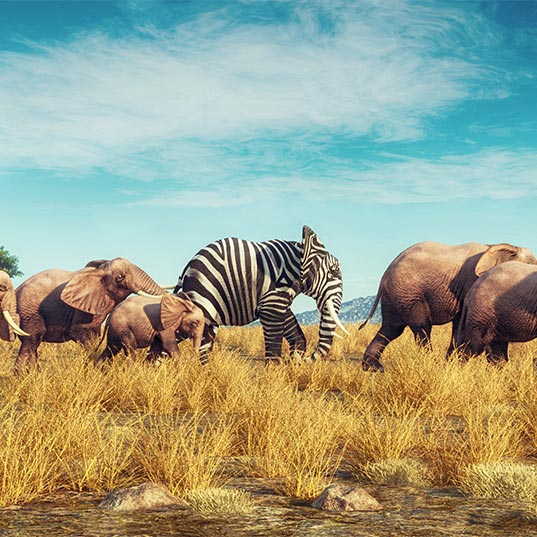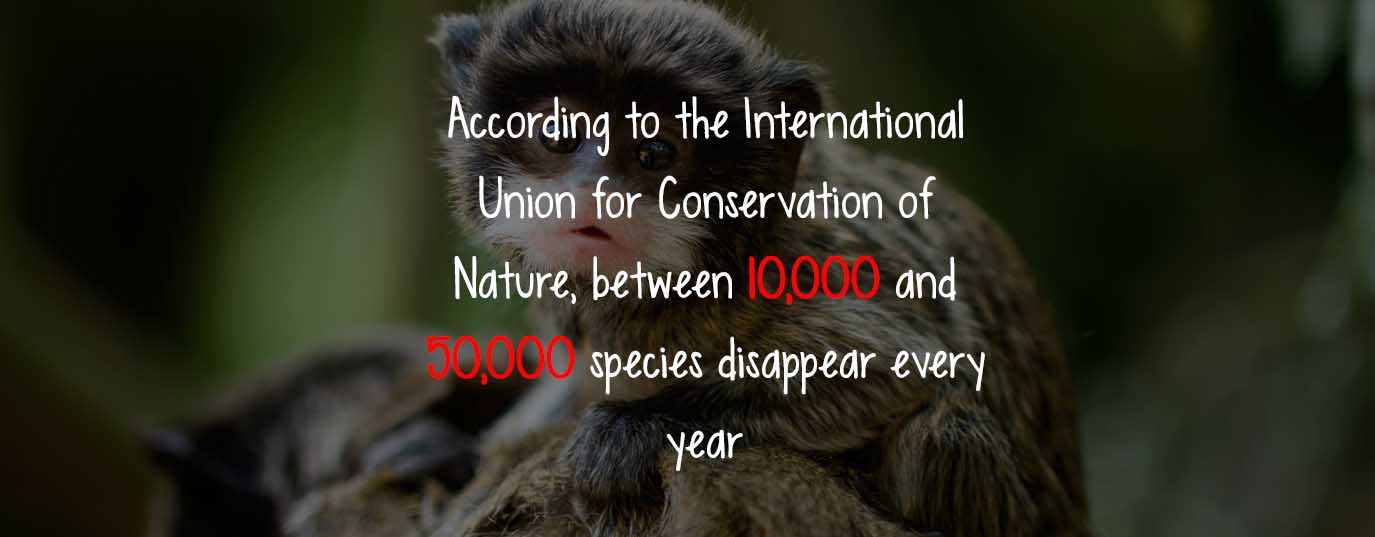Top 10 invasive species
Do you know what the most harmful invasive species in the world are? We show them to you one by one in this ranking
Most damaging invasive species on the planet
The uncontrolled hunting and habitat destruction are not the only factors threatening the survival of many species - or in the worst cases that have caused their disappearance -. Man's action has also led to the introduction of harmful species in other ecosystems which threaten the existence of other living beings in the area.
Sometimes these species are introduced intentionally in other environments, for example for controlling pests or to be sold as exotic pets; or involuntarily, being the case of those organisms traveling hidden in means of transport to a new destination.
The International Union for Conservation of Nature, through the Species Survival Commission, has drawn up a list of the most harmful invasive species in the world based on the severity of their impact on biodiversity or human activities.
Giant cane
It is a plant similar to bamboo, from which differs because out of every knot a single sheet that sheathes the stem comes out.
Species: Arundo donax
Type: grass
Originate from: Asia
Main areas of introduction: Mediterranean area and north of Africa
Threats: the giant cane affects the balance of water rising causing floods or droughts in undesirable moments and is highly flammable.
Shoebutton ardisia
This is a shrub that can grow up to 5 meters. The plants are characterized by a single shaft sticking out perpendicular short branches.
Species: Ardisia elliptica
Type: tree
Originate from: Southeastern Asia and north of Oceania
Main areas of introduction: Tropical Australia, South of United States, the Caribbean and Hawaii
Threats: its high rate of seeds fertilization (more than 400 per square meter) inhibits the growth of native plants.
Aphanomyces
Also known as crab plague, the aphanomyces is a spore that deadly affects crayfish and is one of the most lethal invasive species for other o rganisms.
Species: Aphanomyces astaci
Type: fungus
Originate from: North America
Main areas of introduction: Europe
Threats: unlike the American crayfish, which has developed defenses against the fungus and can survive, in European crayfish the mortality rate of infected crayfish is 100%.
Asian long-horned beetle
This kind of insect originally from China, Japan and Hong Kong reached the western world hidden in wooden crates. They fly and do not represent a direct danger to humans.
Species: Anoplophora glabripennis
Type: insect
Originate from: Asia
Main areas of introduction: North America and Europe
Threats: when they deposit their larvae in the trunks of native trees inhibit the flow of elements in stems and branches, and may even cause dieback and eventually tree death.
Yellow crazy ant
The main characteristic of these ants is their above average size and that they can kill or subdue their prey (even small vertebrates) spraying them with an acid. They are able to work tirelessly over a wide temperature range between 25 °C and 44 °C.
Species: Anoplolepis gracilipes
Type: insect
Originate from: Africa or Asia (there are no conclusive researches)
Main areas of introduction: Australia, South America and the Caribbean
Threats: the yellow crazy ant destroys native vegetation quickly causing negative effects on ecosystems and their endemic species.
Malaria mosquito
Although malaria was eradicated in the United States in the 50s of last century, occasional infections caused by malaria mosquito still occur. Their bite is less painful than a normal mosquito and therefore often go unnoticed.
Species: Anopheles quadrimaculatus
Type: insect
Originate from: East of United States
Main areas of introduction: across North America
Threats: this kind of mosquito is an invasive species that transmit three types of malaria: Plasmodium vivax, Plasmodium malariae and the most dangerous to humans, Plasmodium falciparum.
Asian tiger mosquito
The females of this aggressive species of mosquito differ from other types of mosquito because theyt can draw blood even through a thin layer of clothing, and their activity in urban areas is not limited only to the night hours, as the most native species.
Species: Aedes albopictus
Type: insect
Originate from: Southeastern Asia
Main areas of introduction: Africa, America, Europe and Pacific area
Threats: the Asian tiger mosquito affects both mammals and birds. It is a source of diseases such as dengue and in less often cases of West Nile virus, which can be fatal.
Common myna
The common myna is an omnivorous bird with a strong territorial instinct that lives in open woodland and has adapted well to urban environments where it has been introduced. It is also a recurring figure in Indian culture and often depicted in Sanskrit and Pracrit literature.
Species: Acridotheres tristis
Type: bird
Originate from: Asia
Main areas of introduction: Oceania, South Africa, Canada, Hawaii and Indian Ocean islands
Threats: the flocks of common myna damage crops of grapes, peaches, apples, pears, strawberries and raspberries. In addition, they cause noise pollution in cities and local governments in many affected areas have established campaigns to control the size of the population of myna and protect the indigenous species.
Giant African land snail
This kind of snail has a shell that can grow up to ten centimeters long. It is a type of herbivorous snail, but it can eat everything, including excrements of other animals and even dog or cat food if raised in captivity.
Species: Achatina fulica
Type: mollusc
Originate from: Tropical and East Africa
Main areas of introduction: South America and Pacific islands
Threats: the giant African land snail is harmful to other organisms and ecosystems for several reasons. The first is for their voracity when devastate crops, not only by feeding on them, but also by infecting them. On the other hand, this kind of mollusc can also transmit diseases to other animals, including humans, in case their slime contacts a wound or mucous area
Australian blackwood
The Australian blackwood is the most extended invasive species outside its natural habitat. This tree, 7 to 10 meters high, was introduced on all continents for its value as a source of tannin for trade and its use as firewood.
Species: Acacia mearnsii
Type: shrub
Originate from: Australia
Main areas of introduction: all the planet
Threats: the Australian blackwood is lethal because it competes with local vegetation communities replacing grass, reduces biodiversity and increases the lack of water in coastal areas.
Sources:, International Union for Conservation of Nature Species Survival Commission, ISSG Arundo donax, ISSG Ardisia elliptica, ISSG Aphanomyces astaci, ISSG Anoplophora glabripennis, ISSG Anoplolepis gracilipes, ISSG Anopheles quadrimaculatus, ISSG Aedes albopictus, ISSG Acridotheres tristis, ISSG Achatina fulica and ISSG Acacia mearnsii.









